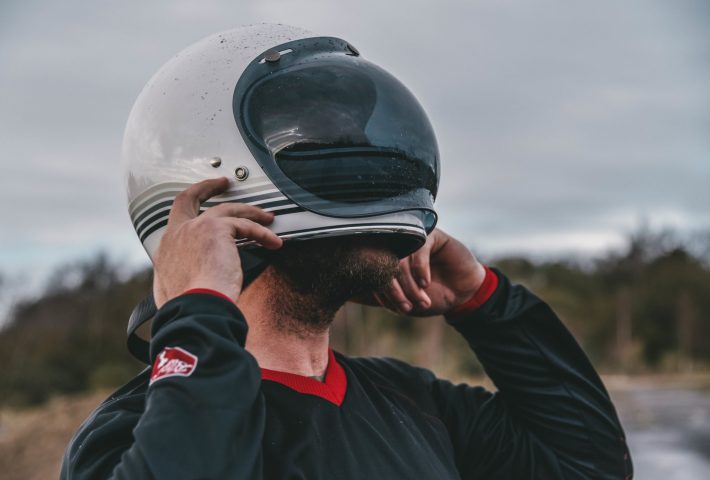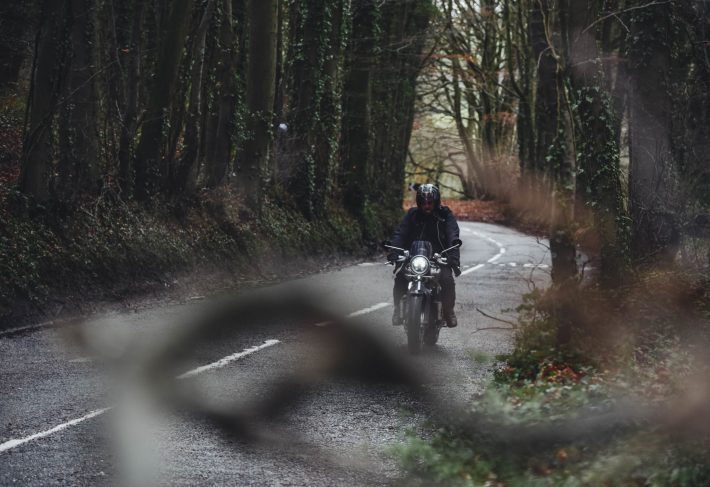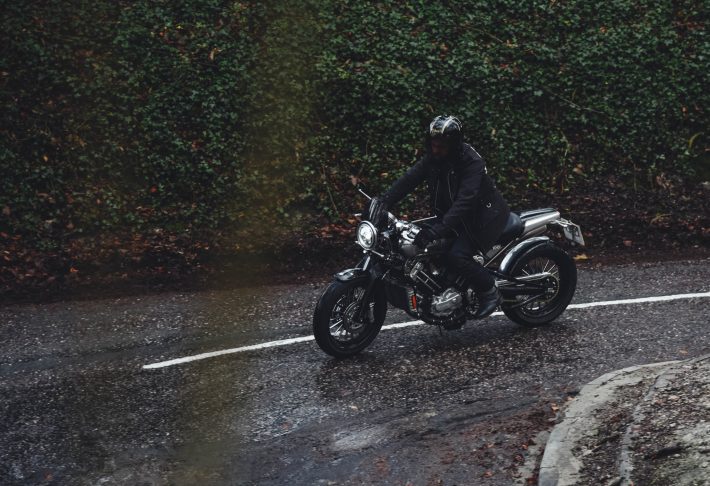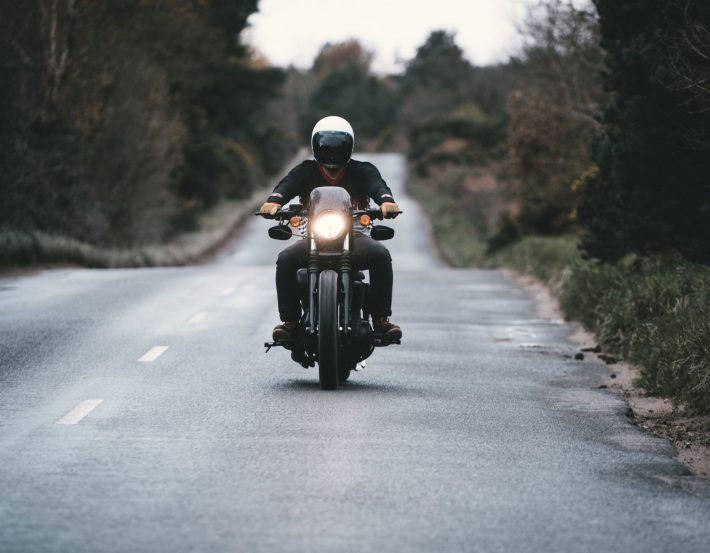Risk Management
Risk management is very evident in our daily lives whether at home or in the workplace. In business, recognised frameworks exist that allow informed decisions to be made through use of a matrix that takes account of the probability of the risk and the severity should it occur.
Whist at home we may not apply such detail but are always looking at reducing risk and introducing suitable measures. Examples of this include installing smoke alarms, stair gates, additional security and so on. Often, this is based on a combination of knowledge and your own personal experience. For example living in a high crime rate area and having been the victim of a burglary should make you more aware of the risk, than those who have not.
Risk Management for Motorcyclists
So how do we apply this to motorcycling? UK law has already put some risk protection in place, for example:
- to ensure the bike is road worthy the machine requires an MOT after 3 years
- in order to reduce head injuries in 1973 all riders were required to wear a helmet
- you must have valid documents and pass the respective test.
For many riders the enforced management of risk ends there, other than the basic human instinct of trying to stay alive and not get seriously injured.
Assessing Risk
At some stage of training a motorcyclist would have been made aware of the phrase ‘defensive riding’ which in essence means maintaining good safety margins whilst always thinking ‘what if?’
Whilst this is totally correct, we could apply a more scientific approach to assessing the scale of risk ahead and then riding according to it.
Flexible Positioning
As an advanced examiner I often see candidates whose positioning on the road is solely determined by a desire to increase their visibility based on the direction of the road ahead. Whilst this is good practise it is only a very basic rule of thumb, as positioning for a view can never be to the detriment of safety.
By example, a rider approaching a tight blind right hand bend would normally adopt a position close to the left kerb on the basis of increasing visibility and to potentially place distance between them and any traffic approaching from the other direction that may cross the centre divide.
On advanced tests many riders apply this with great consistency regardless of any nearside junction or vehicles waiting to pull out from the left. I often question their decision and offer the advice that positioning cannot be rigid and greater flexibility should be introduced into their ride based on a better system of risk management.
Risks
I explain that over the years road safety campaigns, such as ‘think bike’ have been with a junction bias, where the car pulls out on the bike.
Accident statistics published over the years, identify junctions as being a significant risk. The Police, RoSPA and IAM again have common ground with a message of agreeing there are five main causes of motorcycle accidents, which includes junctions.
Most riders through their own experience will have encountered cars pulling out on them. The severity of an impact hitting a near stationary vehicle at even 30mph is high. Based on this knowledge riders should elevate this above other perceived risks such as in the example above.
Learning from Experience
The system of advanced riding has to be flexible as riding is a dynamic aspect of being on the road. You could ride on the same road 5 times a day and potentially take different lines each time.
The mere presence of a nearside junction should not cause you to adopt an exaggerated approach line if the junction is empty and you have good visibility into it. Whereas a blind junction/entrance or the presence of a vehicle waiting to pull out requires a greater risk awareness.
So in addition to knowing what the statistics say is a risk, our own experience will also play a significant part in that decision making. For most the blind entrance of a farmers field may appear a minimal risk but for the rider who has had a tractor unexpectedly pull out on them, will forever be anticipating the same will happen again.
In summary, be better informed about the risk exposed to you and put into place measures that suitably reduce that risk wherever possible.
Mick Jones is the Chief Instructor for Total Advanced Training, a Bike Safe Assessor and a Rospa Motorcycle Examiner. He was a former Bike magazines resident expert for 4 years on their column ‘the riding clinic’ and ex Police Surveillance Motorcyclist in London.
To find out more information about Mick and Total Advanced visit www.totaladvanced.co.uk or e-mail info@totaladvanced.co.uk of phone 07813 167749. You can also follow them on Twitter, Facebook and YouTube.




4 comments on “Risk management for motorcyclists”
There is one position that certainly goes against the adage that positioning for view is good and that is if its over, across to the other side of the road. That maybe required by a police officer in the course of their duties in order maintain a higher than normal speed to get somewhere that they are required to attend but it is not required by civilians who ride at normal speeds certainly those withing the speed limits of whatever road one is on. So they no longer teach off siding as its regarded as being to dangerous.
However in a narrow single track road one where there might be wider passing places its understandable that to travel over to the right ,particularly when approaching a left hand curve may give the rider a better view of any oncoming traffic and under those circumstances is allowable and recommended. However one must in these circumstances understand that a lower than normal speed to stop in is desirable as one has to take into account the oncoming speed of any vehicle that one might meet as well as ones own speed. Both must be taken into account.
‘Be better informed about the the risk expose to you’
Does that mean the risk that is obvious or perhaps one which we are aware may happen and therefore may possibly materialise. Both are important for defensive riding.
If its the first than in many ways its to late. Sometime what materialises in front of us, unless we anticipate or presume the right conclusion and in that depends our safety which is of prime importance.we can be leading ourselves into trouble.., As an example :-travelling down a road and a van man stops at a give way junction on ones nearside. This is a situation we have been in many times before but if we presume or assume wrongly in that we may not anticipate him driving out and causing us to avoid him or collide with him then we are misleading ourselves and a collision is the possibility. However if we presume,assume or anticipate correctly, that he hasn’t seen us or dislikes motorcyclists and may pull out then we are thinking defensively and make the required adjustments to speed, position, gears etc in order to avoid him as he does drive out and avoid any possible collision or at the least take steps to reduce the risk and mitigate the damage and or injury that we may sustain in the even of a collision occurring..
As we should do all that we can to eliminate risk or at least minimise it and its effects on ourselves why do we send motorcyclists into an extremely dangerous position all the time and have ben doing so for about 80 years or so.. This is the position to overtake in should an initial on approach overtake not take place and one then slows behind another vehicle.
All training now says that in order to overtake we should take up a position closer to the vehicle in front
.
That requires us to move forwards from a following on or safe stopping distance to a position that is longer a safer stopping distance. In fact it requires or necessitates us to Tailgate another vehicle and that is not only dangerous but an offence under S. 2 or 3 of the RTA 1960.
This is made worse when attempting or considering an overtake after a left or right hand bend. This is because we are now about or within a second relative to the distance behind the vehicle in front and following it at that distance around a bend. In doing so we are leant over onto the side of our tyres and that means that we are losing the capacity to stop in the distance that we can see to be clear. If we have say about 30% of a lean angle then our grip level of tyre to the road is reduced accordingly. So we now have some 30% less of our full braking capacity. That means that if we need to brake hard we can no longer guarantee stopping in time to not hit that vehicle or we have to swerve to one side or the other and suffer perhaps greater injury with a head on collision on the wrong side of the road.
Now tell me if that is safe and reduced risk I think not. However as said we have been training it for decades and its no wonder that we are still suffering so may incidents on our bends.
I know that the pictures shown are library pictures but when it comes down to an understanding of risk and what we can do to minimise it. I feel that I must mention this.
In picture number 1. The biker has his jacket unzipped and flying wide open.., Not recommended at all.
In picture number 2 the rider is apparently taking a left hand bend and his bike positioning is very close to and almost on the mid line and that is no longer a recommended position to be in as he could collide with a vehicle coming the other way who is cutting what they see as a right hand bend and thus be on or over this mid line. Not recommended.
Finally, picture number 3 . It might be a nice dry and sunny day but the rider has forgotten to put his gloves on. In the event of a fall off or knock off its the arms outstretched for impact protection and the hands that can bare the brunt of any impact with other vehicles or the road surface so we should always ride with gloves on.
Just thought I might mention those points in order that others can minimise risks to ourselves.